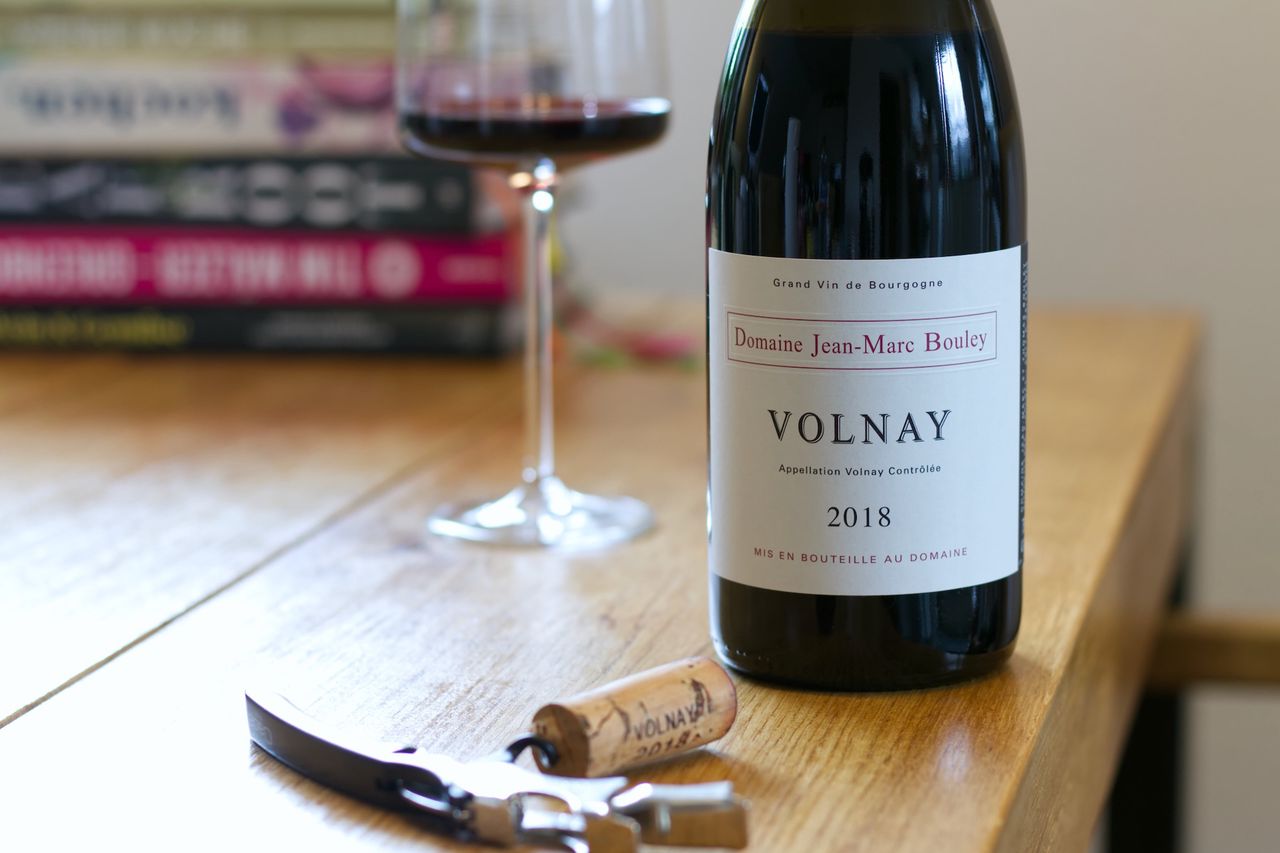Domaine Jean-Marc Bouley - Volnay 2018
We are drinking a bottle of Volnay Pinot Noir 2018 from Domaine Jean-Marc Bouley.

It was kind of inevitable that while attempting a cross-Burgundy tasting, I’d end up with three bottles from vineyards just a short walk away from each other. At least I managed that part well. Just as last week’s wine was a bit west of Auxey-Duresses, today we stroll northeast to Volnay. To be fair, I had no idea that Meursault, Auxey-Duresses, Saint-Romain, and Volnay were practically neighbors. So, from my perspective, the educational goal of this little round of Burgundy wines has been more than met. And for anyone who’s been reading along and didn’t know this either, you’re now wiser, and that’s valuable too. The overarching region for the last three weeks of wines is the Côte de Beaune, which forms the southern part of the Côte-d’Or, itself situated at the northern end of Burgundy (excluding the Chablis enclave). For completeness, moving south from here, we have the Côte Chalonnaise, the Mâconnais, and finally Beaujolais before arriving in Lyon. Now we’re all up to speed, and I can finally find the circumflex accent on the keyboard without looking.
So, Volnay. The appellation is a bit larger than the previous two, covering around 240 hectares. Almost exclusively Pinot Noir is marketed under this appellation. The grapes for the bottle in front of us come from five different parcels around Volnay, at both the top and bottom of the hillside, with a southeast-facing view. The Bouley family has been making wine here for many years, and in the current generation, Thomas Bouley works alongside his father, Jean-Marc. This wine represents the entry point into their Volnay appellation wines and comes from relatively young vines, about 25 years old. The vines grow on calcareous clay soil, are organically farmed, and harvested by hand. The wines are fermented in open barrels and aged for 18 months in barriques, with 25% new oak. Ultimately, the wine ends up in a bottle that, at first glance, should appeal to me with its minimalist label design. But somehow, the design feels too chaotic, the framing around the winery name, the font, the colors. Others like Wasenhaus, Lassak, and the like do it better.
The wine gives off a very dark aroma, with plums, blackberries, and cassis heading the profile. It needs a bit of air to develop its spice, and with that spice, the oak also becomes more noticeable. This wine requires attention. It’s not loud, but you can sense from the beginning that 2018 was a very warm year in Burgundy. On the palate, a surprising amount of acidity streaks across the tongue, followed by even more tannin. Despite the tannin making a strong presence, there’s no harshness, although “velvety” would be the wrong descriptor too. It feels like incredibly finely milled powder, still grainy, but not quite. At the very end of the sip, both the tannin and fruit become a bit dried out, reminiscent of dried fruit. Despite its age, the wine benefits from a good amount of air. The more I swirl the glass, the more I like what I smell, taste, and especially how it feels to drink. That’s always a great sign for the second evening.
And the signs were right. Overnight, the wine developed one of those fruit aromas you just can’t get out of your head. It’s so lovely, berries, cherries, very dark and sweet, but far from jammy. Fresh berries supported by a spice that somehow reminds me of chocolate chai, chocolate, spices, licorice, and a touch of something ethereal. It was good on the first evening, very good even, but now it’s brilliant. At this point, I’d even go as far as to describe the tannin as velvety. While it feels softer, there’s no less of it. It’s like a wild party on the tongue in velvet slippers. There’s just so much going on, it’s super complex yet simply delightful. This isn’t a delicate, dancing wine, it’s a wine with real substance, wrapped snugly in the warmth of its vintage. It’s what you’d call a mouthful of wine, but without any heaviness or heat. And now, as autumn starts to settle in, with the weather turning rainy and cool, this is exactly the kind of wine you want in your glass.